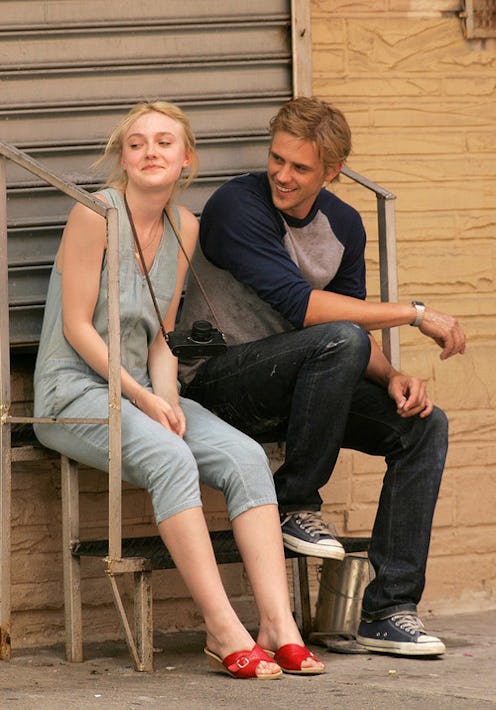Entertainment
Dakota Fanning Shines in 'Very Good Girls'

Growing up in the public eye has got to be awkward. I mean, if only from the sheer number of tabloid pages devoted to child stars' maladjustment, it's clear that being famous while adolescent isn't so much a picnic as it is a micromanaged, hopelessly exposed hellscape. Of course, as most of us can attest, it’s also pretty awkward just growing up at all — wading blindly through those years when decisions first feel like your own and every social foible might as well have been broadcast on an international Jumbotron. Fittingly, it's smack in the middle of this Venn diagram that we find Dakota Fanning in her latest film, Very Good Girls , released On Demand on June 24 and in theaters on July 25. On the one hand, she's in the process of moving on from her Precocious Child Actor phase (see: I Am Sam, Uptown Girls) — while in doing so, she's portraying a teenager trapped in the purgatory that is the Summer Before College, on the threshold of independence with one foot still squarely in her childhood bedroom.
Fanning plays Lily, a Yale-bound titular "good girl," who weathers familial strife and a crappy summer job with the help of her best friend Gerry (Elizabeth Olsen). But when the two make a pact to lose their virginities before they split for school — and both develop crushes on a hunky ice cream vendor-cum-artist (Boyd Holbrook) — things, as they're wont to do, get complicated.
Especially given Fanning's trajectory, it's tempting to write this film off as her version of Britney Spears' "Oops! I Did It Again" red vinyl bodysuit — the traditional "hear me roar" career move that whisks so many young stars from virginal Mickey Mouse-mongering to scantily clad "adulthood" in one fell swoop. And still, while the trailer for Very Good Girls seems to suggest as much — Clothes, shucked! Sex, had! Petticoats, rustled! — the film ends up presenting a refreshingly nuanced portrait of the space between age and maturity.
From the stilted non-conversations of a first romance to the shoe-removal pauses that stall moments of passion, Very Good Girls revels in all the gawky humanity that slicker films tend to leave in the margins. Even the camerawork feels improvised: often handheld, bobbing and weaving through scenes only to settle on perfectly picturesque framing.
Of course, much like the growing-up it chronicles, the film isn't without its stray stumbles — some questionable pacing, dribbles of schmaltz. Still, according to writer-director Naomi Foner, Very Good Girls was meant to be the kind of movie she wished had been around when she was that age, populated with female protagonists who feel real. And these girls certainly do, if nothing else; the film's eye-roll moments are mainly those that make you cringe all-too-knowingly at your teenaged self — how you totally would have swooned if your paramour wheatpasted your picture all over the Lower East Side or asked you to read Sylvia Plath out loud, how you longed to converse in profundities that might as well be Conor Oberst lyrics.
Though the film features a number of noteworthy players — Ellen Barkin, Demi Moore, Peter Sarsgaard, Richard Dreyfuss, Clark Gregg — it's ultimately Fanning who steals the show, her portrayal of tenuous confidence jiving just right with the film's sweetly unflinching look at teenagedom. Call it a breakout performance, then — from simply precocious to genuinely, messily grown.
Image: followingdakota/Tumblr